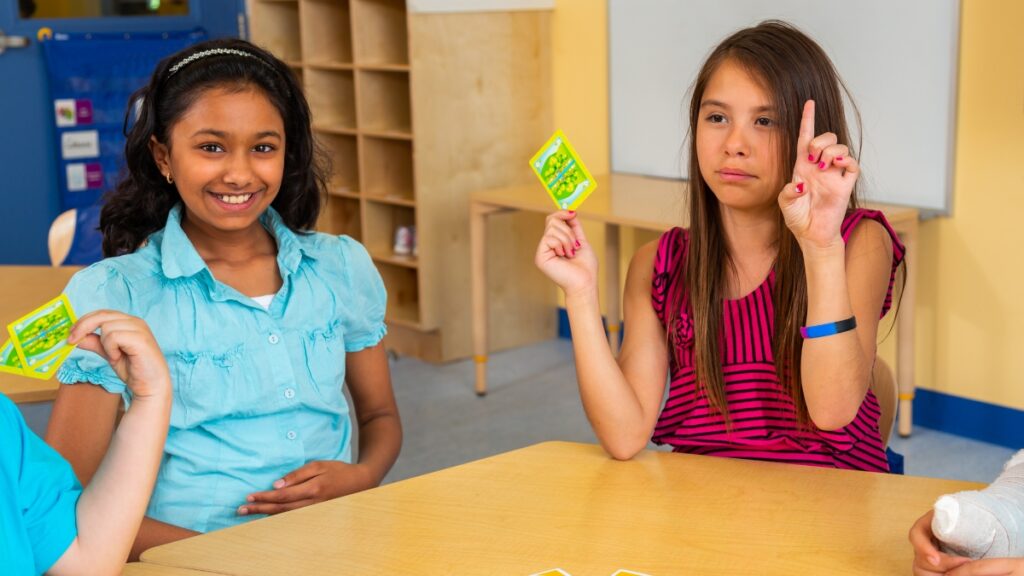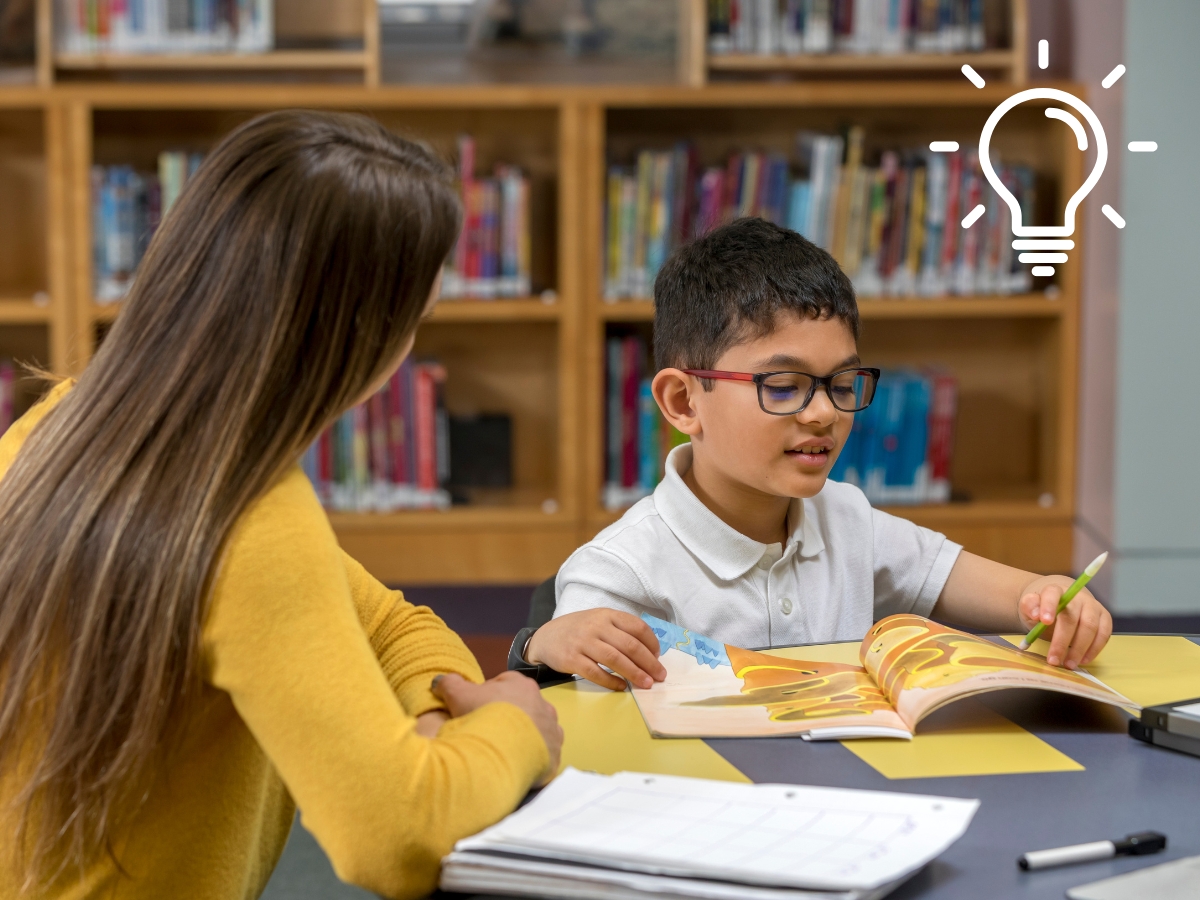How to Teach Newcomer Students Who Speak No English (7 Easy Strategies)
If you’ve ever had a newcomer student who doesn’t speak any English join your class, then you know just how challenging it can be for both the teacher and the student. Not only is it difficult to give instructions, manage the classroom, and keep lessons engaging, but for students, it can feel isolating and overwhelming to be surrounded by a language they don’t yet understand. So how can you teach newcomer ESL students who speak no English and help them succeed in the classroom?
Whether you’re supporting newcomer students in the classroom in a push-in model or teaching them one-on-one in a pull-out setting, the right approach can make a huge difference. With the right strategies, even students with no English can begin to understand, communicate, and feel part of the class. Here are 7 simple yet effective strategies to help you teach newcomer ESL students who speak no English and support their learning from day one.
7 Effective Strategies for Teaching Newcomer ESL Students Who Speak No English
1. Create a “Survival English” Toolkit
Newcomer ESL students often find it challenging to communicate their needs or understand basic instructions. This can make them feel anxious, overwhelmed, and disconnected from classroom activities. A great way to help them adjust quickly is to provide them with a Survival English Toolkit. This toolkit is a set of essential words, phrases, and picture cards that will enable newcomers to navigate daily classroom interactions.

What you include in the pack will depend on the individual student. For example, younger learners or those with no literacy skills in their home language may benefit more from picture-based communication cards, while older students with some foundational literacy might be able to use written word lists and bilingual glossaries.
Some useful elements to include in the toolkit are:
- Basic Classroom Phrases: Can you help me? / I don’t understand. / Where is the bathroom?
- Survival Vocabulary Flashcards: Words for common classroom objects (desk, book, pencil, teacher, door).
- Picture Cue Cards: Visual aids for common actions (sit down, listen, open your book, write).
- Bilingual Word Lists: Key terms translated into the student’s home language for quick reference.
- Classroom Routine Chart: A visual schedule to help students follow daily activities.
Once students receive the toolkit, regular reinforcement is key. Incorporate daily practice, such as role-playing, morning routine reviews, and simple call-and-response activities where students use the phrases in context. Gestures, modeling, and repetition will help reinforce comprehension and confidence in using these essential survival phrases.
By providing newcomer ESL students with practical language tools from day one, you empower them to communicate basic needs, follow instructions, and feel more comfortable in their new learning environment.
2. Labeling the Classroom Together
One of the simplest and most effective ways to help newcomer ESL students learn essential classroom vocabulary is by labeling objects in the room. By physically placing labels on commonly used items, students can see, interact with, and repeatedly reinforce keywords in a meaningful context.

Rather than handing students pre-made labels, involve them in the process. Work together to write labels for everyday classroom objects (desk, chair, book, pencil, whiteboard, door, window) and place them around the room. This interactive approach helps students form direct word-to-object connections while giving them ownership of their learning environment.
To make labeling more engaging, try turning it into a game:
- Memory Challenge – After a few days of seeing the labeled classroom, remove the labels and challenge students to place them correctly again.
- Team Label Race – If teaching two or more students, give each student a set of labels and have them race to correctly place them on the objects.
- Daily Reinforcement – As part of a morning routine, point to different objects and have students say the word, or mix up the labels and let them correct any misplaced ones.
Labeling is a low-prep, high-impact way to immerse students in survival vocabulary from day one. It not only helps them memorize and recall words faster, but also boosts their confidence in navigating their new classroom environment.
3. Reinforce New Language Through Routines & Repetition
Hearing the same words and phrases repeatedly in a familiar context is incredibly useful for newcomer ESL students, as it helps them gain confidence and develop comprehension naturally. A great way to incorporate repetition of essential words and phrases is to embed them into daily classroom routines so that students are regularly exposed to this language throughout the day.
For example, you could start each lesson by asking the student:
- What day is it today?
- What’s the weather like?
- How are you today?
This creates a predictable and structured interaction, making it easier for students to internalize key phrases over time.
You can also reinforce classroom vocabulary by consistently using it in daily instructions:
- Put your book on your desk.
- Look at the whiteboard.
- Take a pencil and write your name.
By hearing these words in real, meaningful contexts, students are more likely to remember and use them.
4. Pair Newcomer Students with a Classroom Buddy
Pairing a newcomer student with a classroom buddy can be incredibly effective. A buddy would help model classroom routines and provide support so the newcomer doesn’t feel lost or left behind. Having a buddy also creates valuable opportunities for natural language acquisition, as the newcomer must listen and attempt to communicate with their partner despite their limited English.

When choosing a buddy for your newcomer, select a student who is patient, friendly, and willing to help. If possible, pair the newcomer with a peer who speaks the same home language to ease communication, but if that’s not an option, a kind and responsible English-speaking student can still provide valuable support.
Here are some ways a classroom buddy can help:
- Guiding the newcomer through daily routines – Demonstrating how to line up, where to put belongings, or how to participate in activities.
- Modeling key phrases and responses – Encouraging the newcomer to use simple classroom language (Can I borrow a pencil? / Where do I put my book?).
- Helping with classroom tasks – Working together on partner activities, pointing out instructions, or offering clarification.
- Providing social inclusion – Sitting together during group work, introducing them to other classmates, and helping them feel part of the class.
5. Encourage Participation Without Pressure
If you’ve ever tried to speak another language in front of people, you know just how intimidating that can be. For newcomer students, this is especially true, particularly when speaking in front of the whole class. At first, some students may enter a silent period, where they listen and absorb language before feeling comfortable enough to speak. Forcing them to talk before they’re ready can create anxiety, so it’s important to provide low-pressure ways to participate while they build confidence.
One way to do this is by allowing non-verbal responses in the early stages of language learning. Instead of expecting a spoken answer, encourage students to:
- Point to the correct answer on a chart or flashcard.
- Use gestures or body language to respond to simple questions.
- Match words to pictures in a sorting activity.
Pair and small-group activities can also help lower the pressure of speaking in front of the whole class. Games like think-pair-share, role-playing, or activities where students respond with short, simple phrases allow them to practice without the fear of making mistakes in front of everyone.
Using choral responses—where the whole class answers together—can also help. This gives newcomer students a chance to practice pronunciation in a supportive, non-threatening way.
As students gain confidence, they will naturally begin to speak more independently. By respecting their learning pace and giving them alternative ways to participate, you create a classroom environment where they feel safe, included, and ready to take language risks when they’re ready.
6. Ask Closed Questions to Build Confidence
Open-ended questions can be overwhelming for newcomer ESL students, especially when they are still developing their language skills. Instead, using closed questions—where the student can respond with “yes” or “no” or choose between two options—allows them to successfully communicate with minimal pressure. This builds confidence and encourages them to participate more frequently.
For example, instead of asking “What do you want to eat?”, which requires a more complex response, try “Do you want an apple or a banana?”, where the student only has to choose between two options.
Other examples of effective closed-question formats include:
- Yes/No Questions: “Is this a book?” / “Do you like pizza?”
- Either/Or Questions: “Is this a pencil or a pen?” / “Are you happy or sad?”
- Point & Choose Questions: “Is this red or blue?” (while showing two objects).
These types of questions provide plenty of chances for the learner to successfully communicate, reinforcing their understanding of English while reducing the fear of making mistakes. Over time, as their confidence grows, students will become more comfortable expanding their responses and engaging in longer conversations.
7. Use Games to Make Learning Fun
Students learn best when they are engaged and enjoying the process, and this is especially true for newcomer ESL students. Games create a low-pressure environment where students can practice language skills naturally, helping them absorb new vocabulary and phrases without the stress of formal instruction.

Playing games also provides meaningful repetition, reinforcing keywords and phrases in an interactive and memorable way. When students are focused on having fun, they are more likely to participate and retain what they learn.
Simple ESL Games for Newcomer Students:
- Matching Games – Pair words with pictures or objects to reinforce vocabulary.
- Simon Says – Teaches action words (jump, sit, touch the desk) through movement.
- Go Fish – A fun way to practice question-and-answer structures like “Do you have a…?”.
- Memory Game – Use flashcards to help students remember key words.
- Find & Label – Hide labels around the classroom and have students find and match them to objects.
If you’re looking for ready-to-use games that require no prep, our PowerPoint Games are a great way to get students speaking while having fun. You can also check out our activity videos, which feature simple classroom games that work well with beginner learners. These resources make it easy to introduce interactive learning without extra planning, ensuring that newcomer students stay engaged while building their English skills.

Supporting newcomer ESL students can feel challenging at first, but with the right strategies, they can quickly begin to understand, communicate, and feel comfortable in the classroom. By using these approaches, you’ll create a welcoming learning environment that builds confidence and encourages language growth. Happy teaching!


